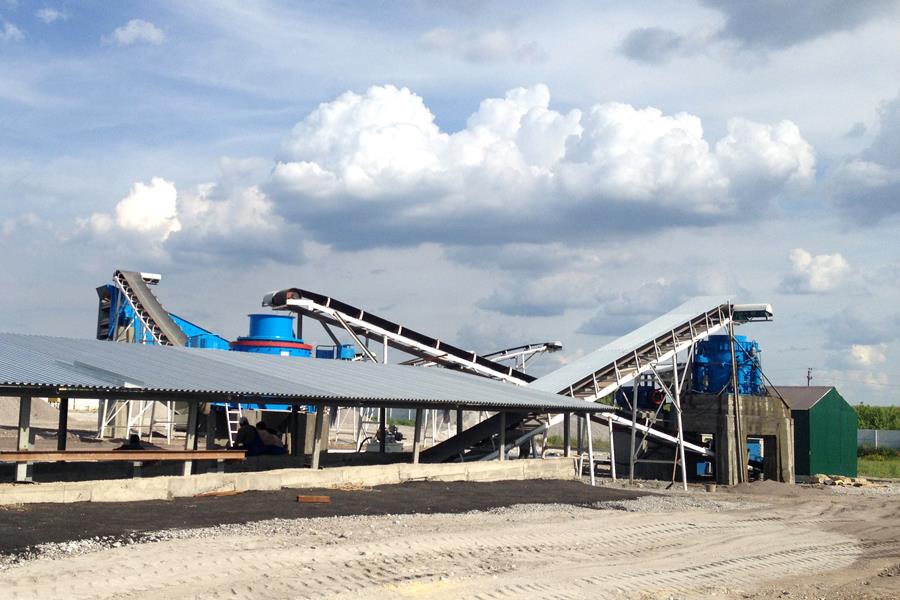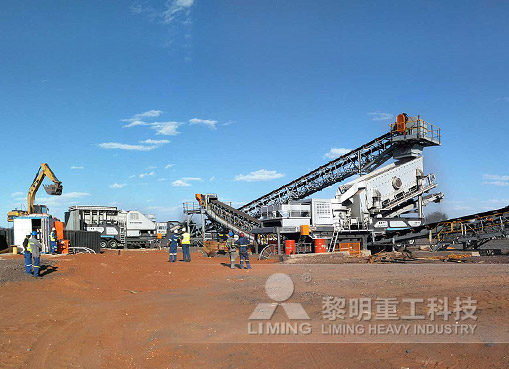

Ore material properties have the following impacts on stone crushing equipment:1. Material HardnessThe primary factor affecting the difficulty of ore crushing during production is the ore's hardness.
Ore material properties have the following impacts on stone crushing equipment:
1. Material Hardness
The primary factor affecting the difficulty of ore crushing during production is the ore's hardness.

Most ore materials have uneven mechanical properties. Larger lumps and more interstices have weaker mechanical strength and are easier to crush. Finer particles, on the other hand, have fewer interstices, resulting in higher mechanical strength and greater resistance to crushing. The harder the ore, the greater its density, making crushing more difficult, reducing efficiency, and increasing wear on the equipment.
2. Feed Size and Appropriate Feed Rate
Each machine model has a maximum feed size limit. Excessive feed size can easily cause blockage and render the equipment inoperable. Excessive fines in the material also affect sand production. Materials high in fines should be screened beforehand to remove the fines to prevent them from affecting the equipment's normal operation.
While ensuring production, an appropriate feed rate helps extend the life of consumable parts. Sand production reaches peak value when the feed rate reaches 70%-90% of the impeller's full load. A feed rate that is too low not only reduces equipment output but also increases wear on the crushing chamber liner and other components, shortening the replacement cycle for components.

3. Material Moisture
When the material contains a high moisture content, it is prone to adhesion within the impact sand making machine and can cause blockage during the conveying process, reducing sand production capacity. If the material is too moist, methods such as sun drying or air drying can be used to reduce the moisture content.
4. Material Viscosity
The higher the viscosity of the material, the more likely it is to adhere. Highly viscous materials can adhere to the inner wall of the flow channel within the impeller, even blocking the flow channel. If not cleaned promptly, this will affect the crusher's efficiency and, in severe cases, even disrupt normal operation. Therefore, when selecting materials, choose low viscosity.
Previous: SMP Crusher
Next: SMP Crusher

Ore material properties have the following impacts on stone crushing equipment:1. Material HardnessThe primary factor affecting the difficulty of ore crushing during production is the ore's hardness.
Ore material properties have the following impacts on stone crushing equipment:
1. Material Hardness
The primary factor affecting the difficulty of ore crushing during production is the ore's hardness.

Most ore materials have uneven mechanical properties. Larger lumps and more interstices have weaker mechanical strength and are easier to crush. Finer particles, on the other hand, have fewer interstices, resulting in higher mechanical strength and greater resistance to crushing. The harder the ore, the greater its density, making crushing more difficult, reducing efficiency, and increasing wear on the equipment.
2. Feed Size and Appropriate Feed Rate
Each machine model has a maximum feed size limit. Excessive feed size can easily cause blockage and render the equipment inoperable. Excessive fines in the material also affect sand production. Materials high in fines should be screened beforehand to remove the fines to prevent them from affecting the equipment's normal operation.
While ensuring production, an appropriate feed rate helps extend the life of consumable parts. Sand production reaches peak value when the feed rate reaches 70%-90% of the impeller's full load. A feed rate that is too low not only reduces equipment output but also increases wear on the crushing chamber liner and other components, shortening the replacement cycle for components.

3. Material Moisture
When the material contains a high moisture content, it is prone to adhesion within the impact sand making machine and can cause blockage during the conveying process, reducing sand production capacity. If the material is too moist, methods such as sun drying or air drying can be used to reduce the moisture content.
4. Material Viscosity
The higher the viscosity of the material, the more likely it is to adhere. Highly viscous materials can adhere to the inner wall of the flow channel within the impeller, even blocking the flow channel. If not cleaned promptly, this will affect the crusher's efficiency and, in severe cases, even disrupt normal operation. Therefore, when selecting materials, choose low viscosity.
Previous: SMP Crusher
Next: SMP Crusher
 What influence do ore material properties have on stone crushing equipment
What influence do ore material properties have on stone crushing equipment How to adjust the particle size of impact crusher
How to adjust the particle size of impact crusher Full-scale production of Shibang and Anhui Communications Control Group to build an annual output of 60 million tons of aggregate project
Full-scale production of Shibang and Anhui Communications Control Group to build an annual output of 60 million tons of aggregate project What are the advantages of Shibang aggregate sand making equipment production line equipment
What are the advantages of Shibang aggregate sand making equipment production line equipment How to produce high-standard sand and gravel aggregates
How to produce high-standard sand and gravel aggregates What influence do ore material properties have on stone crushing equipment
What influence do ore material properties have on stone crushing equipment How to adjust the particle size of impact crusher
How to adjust the particle size of impact crusher Full-scale production of Shibang and Anhui Communications Control Group to build an annual output of 60 million tons of aggregate project
Full-scale production of Shibang and Anhui Communications Control Group to build an annual output of 60 million tons of aggregate project What are the advantages of Shibang aggregate sand making equipment production line equipment
What are the advantages of Shibang aggregate sand making equipment production line equipment How to produce high-standard sand and gravel aggregates
How to produce high-standard sand and gravel aggregates